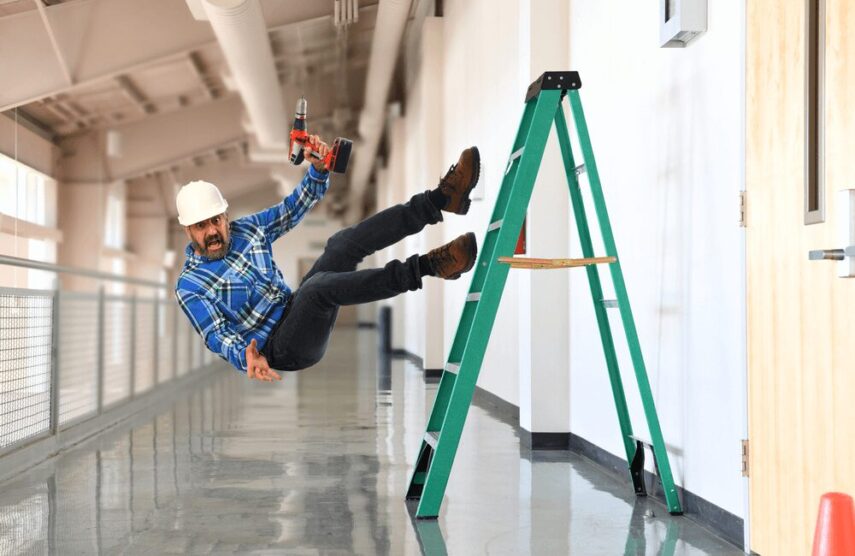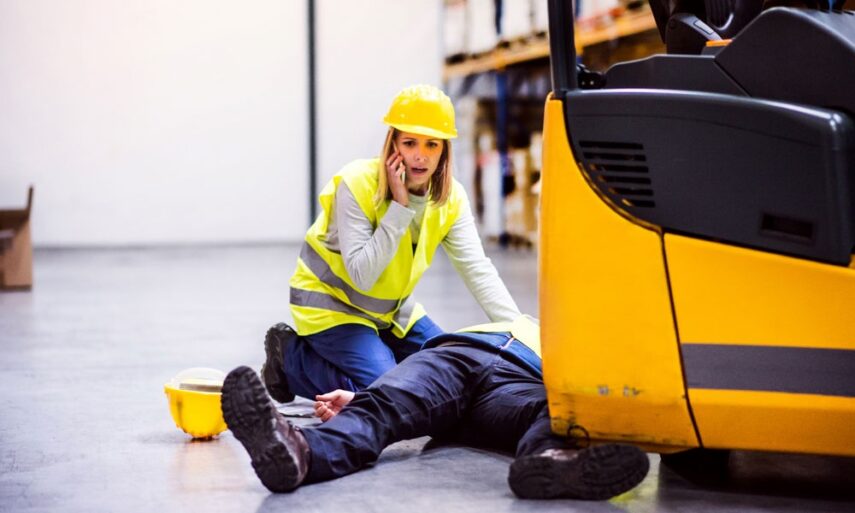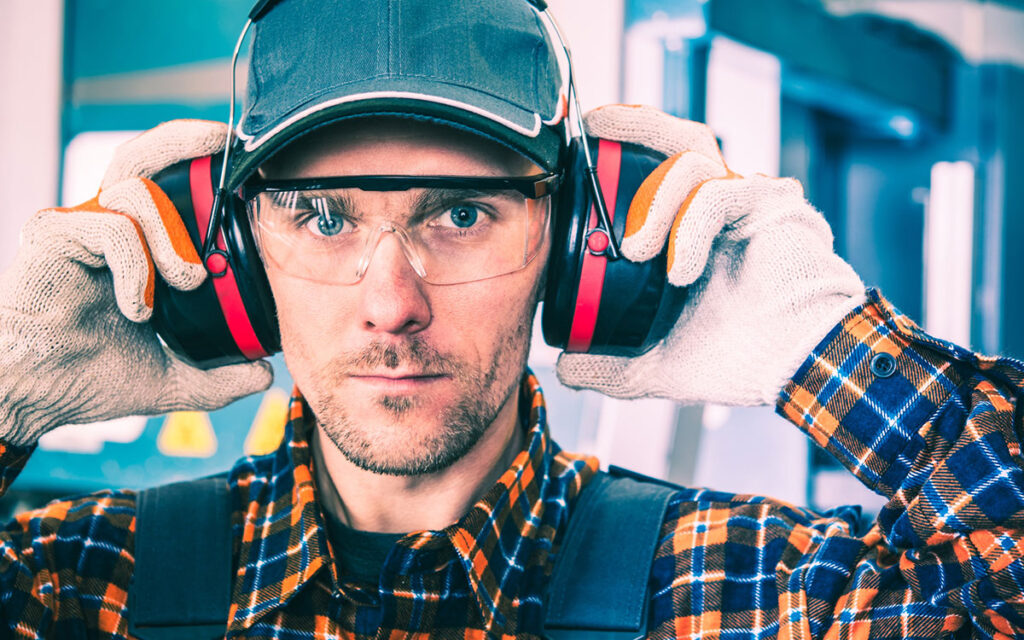When injuries occur in the workplace, they can cost employees quite a lot of money, time, pain, and suffering. To some extent, it also affects their loved ones. While you may not be able to entirely eliminate the possibility that these injuries could occur, some of these injuries can be prevented from happening with preparedness and caution. In an attempt to avoid or remove potential risks, managers and workers should identify the warning signs and hazards involved with each injury.
Below are some of the most common workplace injuries and how you can avoid them.
1. Falls, trips, and slips

This is the most common type of injury in the workplace, constituting about a third of all injuries according to statistics of compensation claims sought by employees through a personal injury lawyer. Whether you are in an office or working in a factory, this is one of the injuries that you should be cautious about.
Owing to the absence of grip or friction between boots and the ground, slides occur. Because of oily or damp ground, unclean spills, and weather risks, this also occurs. Slips are often caused by rocky slopes or walking surfaces with uneven footing. Trips and falls usually occur on slippery surfaces or working in high places. These accidents usually lead to injuries in places such as the head, back, and neck, sometimes alongside fractured bones. To prevent these injuries, ensure housekeeping is well done, dry all wet surfaces, and have quality walking surfaces.
2. Fires and explosions
Fires and explosions are usually caused by faulty gas lines or improper handling of flammable materials. Sometimes electrical faults are to blame, but open flames are usually the most common cause of fires in workplaces. The resulting injuries include respiratory problems and varying degrees of burns, which may escalate into disfigurement. Of all workplace causes of injuries, fires and explosions have the largest number of casualties, which calls for extreme precaution. Also, employees need to be trained on what to do to reduce the number of casualties in case of a fire, and hazard communication is necessary to keep employees alert. When handling any chemicals, employees should always have protective gear on.
Employees can however wear protective clothing and maintain handy chemical safety data sheets for products. A simple emergency plan will go a long way towards preventing accidents, and daily use of these exercises.
3. Repetitive stress and overexertion

You have probably heard that you should lift heavy weights with your knees and not your back. These practices by employees usually lead to increased complaints of back pains. Today, the prevalence of musculoskeletal disorders is on the rise in many businesses and workplaces. The injuries are very expensive to treat and may cost an employee their income entirely.
Apart from the improper lifting of weights, working continuously with no breaks and intensive keying may also cause these injuries. The best way of preventing these injuries is by adjusting your body to the requirements of the job. For example, workers with repetitive motion should be given some break to rest and stretch. Heavy weight lifters should carry loads below 50lbs.
4. Exposure to toxic substances
Many employees suffer at the hands of workplaces with hazardous and toxic chemicals and gases, which lead to various health issues. A good example is pneumoconiosis, a disease that often affects workers in coal mines. According to Bergman Legal, exposure to asbestos leads to mesothelioma, a lung disease that affects many workers in the United States. When injured at the workplace through an accident or asbestos poisoning, a good lawyer can help you seek compensation.
Under these cases, protective protection such as safety goggles is indispensable, but managers need to make careful to supply employees with the equipment they need to prevent harmful exposure.
5. Injury caused by Machinery

Machinery that is not properly handled, controlled, or worked can cause crippling injuries. Common accidents involve body parts being trapped in or hit by exposed moving parts, flying objects from devices, and inappropriate use. This can lead to arms being broken, fingers cut, blindness, or worse. Usually mechanical risks arise at the point of service (where the job is done) or due to objects such as pulleys, defective belts, loose chains, and other moving components.
Safeguard the operating processes that go along with each piece of machinery to minimise the risk of accidents incurred by machinery. Ensure appropriate training of the technician as well as protective equipment.
6. Transportation injuries
Employees employed in transportation or near cars are at risk of being injured or run over, falling from the car, being hit by vehicle parts, and even being stuck or worse under a car that has been overturned. Industrial, construction, and agriculture firms are highly vulnerable to accidents in this category. The prevention of these kinds of incidents starts with the assessment of who is at risk, as well as when and where these things go wrong most often.
It is then then that preventive strategies are easier to establish. Focus on the architecture of the workplace, ensure that all design pathways still segregate pedestrians and cars and render any barriers easily noticeable. Speed limits, directions and priority signs are also useful.
7. Exposure to Loud Noise

You may assume that industrial deafness is a thing of the past and goes with all those old heavy factories, but that’s not the way, not least so when at work, many factory workers tend to be subjected to noisy noises.
The CDC reports that about a quarter of hearing issues for staff are work-related. The most prominent causes of such hearing disorders include exposure to loud sounds and chemicals.
Bottom Line
To safeguard yourself from these workplace injuries, it is important to ensure you have the proper training for the job. Workers should also wear the appropriate protective gear and equipment wherever the job demands it. Most importantly, health and safety hazards should always be addressed. If you suffer an injury at the workplace, a good workplace accident attorney can help you seek compensation for your pain, suffering, and financial loss.
Ergonomics is the secret to avoiding these accidents! Ergonomics is the method of changing the work to suit the needs of the body and offers easy and reasonably affordable accident reduction solutions. Jobs assigned to activities that require repeated action should be expected to take regular breaks to relax or stretch, and anything weighing above 50lbs should be supplied with manual or mechanical lifting equipment.







